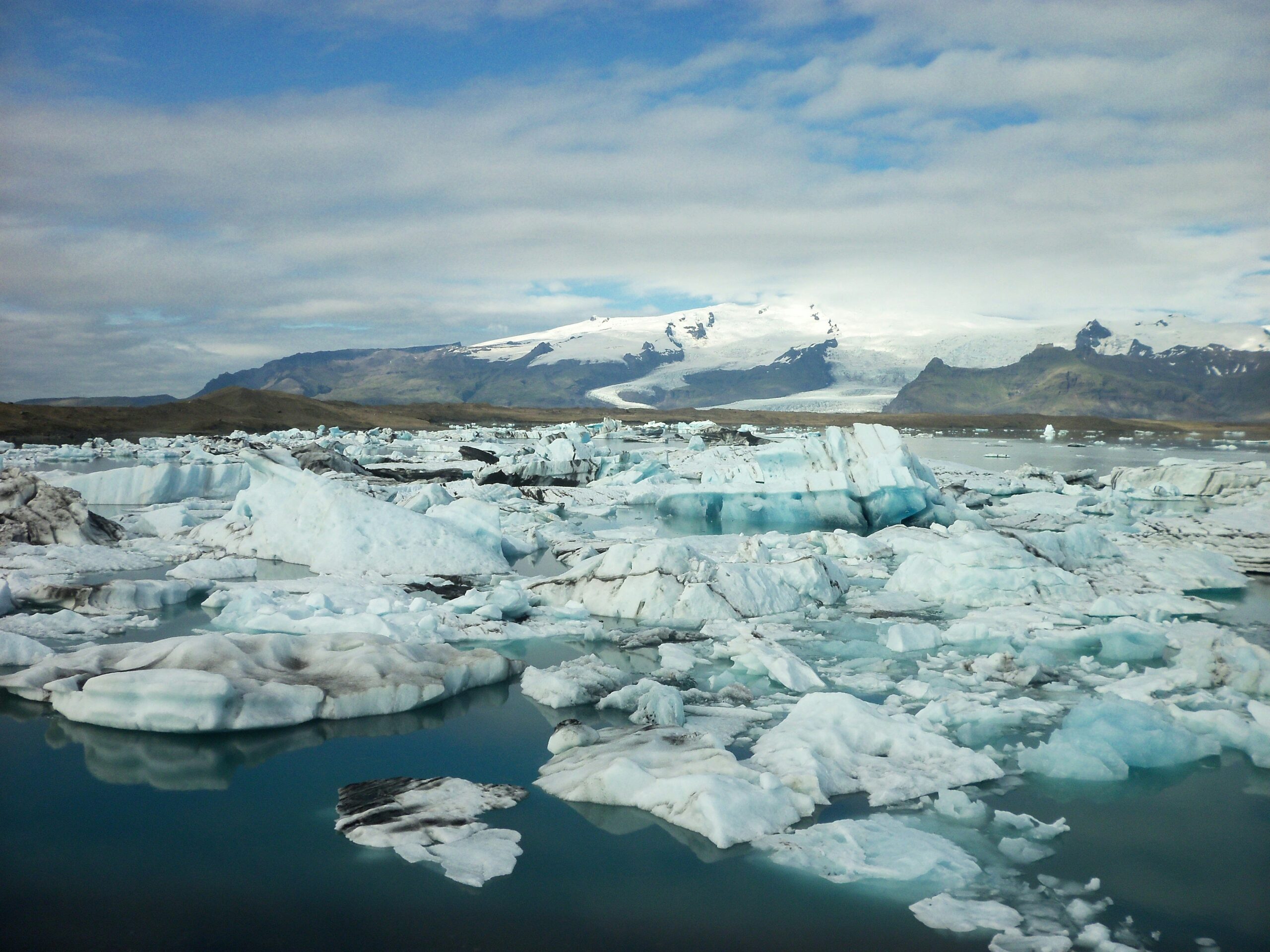If you've ever dreamt of conquering Mount Shasta's majestic peaks, you may find yourself wondering if you need any special equipment to embark on this thrilling adventure. Well, fear not! In order to scale the heights of this magnificent mountain, you'll certainly need some important gear. From sturdy hiking boots to crampons and ice axes, the equipment required will ensure your safety and enhance your overall climbing experience. So, let's take a closer look at what you'll need to conquer the awe-inspiring heights of Mount Shasta!
Understanding Mount Shasta Terrain
Identifying different terrains on the mountain
Mount Shasta is a majestic peak located in Northern California and attracts climbers from all over the world. Understanding the diverse terrains on Mount Shasta is crucial for a safe and successful climb. The mountain consists of various types of terrains, including glaciers, snowfields, rocks, and volcanic ash. Each terrain presents its unique challenges and requires different approaches to navigation and climbing.
Potential hazards related to the terrain
While climbing Mount Shasta, it is important to be aware of the potential hazards associated with the different terrains. The glaciers, although awe-inspiring, can pose dangers such as crevasses and thin ice. It is essential to have the proper training and equipment to navigate safely through these hazards. Additionally, the loose volcanic ash and rocks on the mountain can increase the risk of rockfall and avalanches, creating a hazardous environment for climbers.
Types of climbing techniques suitable for different terrains
To tackle the varying terrains on Mount Shasta, climbers need to be proficient in different climbing techniques. For snow and glacier-covered areas, skills such as ice axe arrest, crampon techniques, and roped travel are essential. As for the rocky sections, climbers should have experience in scrambling, route-finding, and using proper hand and foot placement. It is crucial to assess the terrain and choose the most suitable technique for a safe and enjoyable climb.
Essential Climbing Equipment
Choosing the right mountaineering boots
When it comes to mountaineering, selecting the right pair of boots is of utmost importance. Mount Shasta's terrain demands sturdy, insulated, and waterproof boots that provide excellent ankle support. Look for boots specifically designed for high-altitude mountain climbing with crampon compatibility. It is crucial to try on different pairs and ensure a correct fit to prevent blisters and discomfort during the climb.
Using ice axe and crampons
Ice axes and crampons are vital tools for navigating snow and ice-covered areas on Mount Shasta. An ice axe serves as a multi-purpose tool, providing balance, stability, and assisting with self-arrest in case of a slip or fall. Crampons, on the other hand, are metal spikes that attach to boots and provide traction on icy surfaces. Proper technique and training in using these tools are essential to safely maneuver through the mountain's icy terrains.
Navigating with a compass and topographic map
Navigating the mountain's complex terrain requires proficiency in using a compass and a topographic map. These tools will help you determine your location, plan routes, and identify landmarks. Understanding how to interpret contour lines, measure distances, and use a compass for precise bearings are essential skills. Familiarize yourself with the map and compass before embarking on the climb to ensure efficient navigation.
Importance of climbing helmets
A climbing helmet is a vital piece of equipment that should never be overlooked. Mount Shasta's loose rock sections and the risk of falling ice or rockfall make a helmet crucial for protecting your head from potential injuries. Choose a helmet specifically designed for mountaineering, ensuring a proper fit and comfort. Remember, safety should always be the top priority, and a helmet is an excellent investment to mitigate the risk of head injuries.
Benefits of having trekking poles
Trekking poles are not essential for climbing Mount Shasta but can be incredibly beneficial, especially during long approaches and descents. They help distribute the weight off your legs, provide stability on uneven and steep terrain, and reduce stress on your knees. Additionally, trekking poles can be used to test snow conditions and provide support while crossing streams or glaciers. Consider using poles to enhance your climbing experience and reduce fatigue throughout the journey.

Weather Protective Gear
Understanding Mount Shasta's weather
Mount Shasta's weather conditions can change rapidly, and climbers must have a thorough understanding of the local weather patterns before embarking on their journey. Research the mountain's historical weather data, including temperature fluctuations, precipitation levels, and wind patterns. Additionally, keep a close eye on updated weather forecasts provided by local authorities or mountain guide services to ensure you are well-prepared for any weather changes during your climb.
Selecting the right clothing layers
Proper clothing layers are essential for protecting yourself from the variable weather on Mount Shasta. Dressing in layers allows you to adjust your clothing based on the temperature, wind, and exertion level. Start with a moisture-wicking base layer to keep your skin dry, add an insulating mid-layer such as fleece or down jackets, and finish with a waterproof and breathable shell layer to protect against wind, rain, and snow. Don't forget to bring extra layers to provide warmth during breaks or unexpected weather changes.
Waterproof gloves and socks
Having waterproof gloves and socks is crucial to keep your extremities dry and protected from the elements. Wet hands and feet can lead to discomfort, blisters, and even frostbite in extreme conditions. Look for gloves and socks made specifically for mountaineering that offer insulation, durability, and waterproofing features. It is recommended to bring extra pairs of gloves and socks to ensure you always have dry options available.
Importance of sunglasses and sunscreen
Protecting your eyes and skin from the sun's harmful rays while climbing Mount Shasta is essential. The high altitude and reflective nature of snow and ice can intensify UV radiation exposure, leading to snow blindness and sunburn. Invest in a good pair of glacier sunglasses with side shields to block out harmful UV rays and prevent snow blindness. Apply a high SPF sunscreen on exposed skin and reapply regularly to minimize the risk of sunburn throughout the climb.
Mountain-grade sleeping bag
A quality mountain-grade sleeping bag is essential for staying warm and comfortable during overnight camping on Mount Shasta. Choose a sleeping bag that is rated for cold temperatures, preferably with a temperature rating lower than the expected nighttime temperatures on the mountain. Ensure that the sleeping bag is lightweight, packable, and made with moisture-resistant materials to withstand the conditions encountered at high altitude.
Food and Hydration
Calculating water requirements
Proper hydration is crucial for a successful climb. Mount Shasta's high altitude and physical exertion increase the risk of dehydration. Calculate your water requirements based on the estimated duration of the climb and your individual needs. It is recommended to consume at least 3-4 liters of water per day to stay hydrated. Consider using a hydration bladder or water bottles that are easily accessible during the climb. Don't forget to factor in additional water for cooking and cleaning purposes.
Choosing high-energy food options
When climbing Mount Shasta, your body requires high-energy foods to sustain the physical demands of the ascent. Select lightweight, nutrient-dense foods that provide a balance of carbohydrates, proteins, and fats. Clif bars, energy gels, trail mix, jerky, and dehydrated meals are all popular choices among climbers. Opt for easily digestible foods that require minimal preparation and are suitable for the altitude and temperature conditions on the mountain.
Carrying additional food supplies
Pack enough food supplies to sustain you for the duration of the climb, including extra snacks for unexpected delays or emergencies. Opt for non-perishable foods that provide a good source of energy and require minimal preparation. Granola bars, dried fruits, nuts, and canned tuna are excellent options to consider. Remember to pack your food in a way that minimizes weight and maximizes space within your backpack.
Portable cooking stove and utensils
If you plan on preparing hot meals or beverages during your climb, a lightweight and compact portable cooking stove is essential. Look for stoves that are fuel-efficient, easy to use, and suitable for high-altitude conditions. Carry the necessary cooking utensils such as a pot, cup, and utensils made from lightweight materials like titanium or aluminum. Remember to practice safe cooking practices, especially in dry or windy conditions, to prevent accidents and reduce the risk of causing wildfires.

Emergency and First Aid Kit
Essential items in a first aid kit
Carrying a well-equipped first aid kit is crucial to handle any injuries or emergencies that may arise during the climb. Your first aid kit should include items such as adhesive bandages, sterile gauze, disinfectant, adhesive tape, blister treatment, pain relievers, and any personal medications you may require. It is essential to have basic knowledge of first aid techniques and receive proper training to effectively utilize the items in your kit.
Additional survival gear
In addition to the first aid kit, it is recommended to carry essential survival gear in case of unexpected emergencies or prolonged stays on the mountain. Items such as a lightweight emergency blanket, a whistle, a multi-tool, a fire starter, and extra food and water should be included. These items can aid in attracting attention, providing shelter, and ensuring your basic needs are met if you encounter unplanned difficulties during your climb.
Personal Locator Beacon (PLB) for rescue
When venturing into remote and potentially hazardous environments like Mount Shasta, having a Personal Locator Beacon (PLB) can be a lifesaver. A PLB is a small device that, when activated, sends a distress signal to search and rescue authorities, notifying them of your location. Each member of your climbing party should carry their own PLB and ensure it is properly registered and activated in case of emergencies where immediate assistance is needed.
Camp Equipment
Carrying a lightweight tent
If you plan on spending overnight on Mount Shasta, carrying a lightweight and durable tent is essential for shelter and protection from the elements. Look for backpacking tents designed specifically for mountaineering that offer a balance between weight, strength, and weather resistance. Ensure that the tent is easy to set up, provides adequate space for you and your gear, and has proper ventilation to prevent condensation buildup.
Importance of insulating sleeping pads
Insulating sleeping pads play a critical role in providing comfort, warmth, and insulation from the cold ground during overnight camping on Mount Shasta. Opt for lightweight and inflatable sleeping pads that offer sufficient insulation and cushioning. The pads should be easy to pack, durable, and resistant to punctures. A good night's sleep is essential for maintaining energy and focus during the climb, and a quality sleeping pad can significantly enhance your rest and recovery.
Headlamps and torches
Carrying a reliable light source such as a headlamp or torch is essential for navigating during early morning starts, late finishes, or emergency situations. Choose headlamps or torches that provide a strong and adjustable beam, long battery life, and lightweight design. Test your light source before the climb to ensure it is in working condition and carry extra batteries as a backup. A reliable light source will enhance your safety, help with route-finding, and provide visibility in low-light conditions.

Communication Devices
Carrying a reliable communication device
Staying connected with the outside world while climbing Mount Shasta is crucial for safety and peace of mind. Carrying a reliable communication device, such as a satellite phone or a two-way radio, allows you to communicate with your climbing partners, base camp, and rescue authorities if needed. Ensure your device is fully charged, has good reception in the area, and inform someone of your planned itinerary and communication plan.
Keeping backup power sources
In remote areas like Mount Shasta, it is important to have backup power sources for your communication devices, headlamps, and other battery-powered equipment. Portable power banks and solar chargers are excellent options to keep your devices charged when traditional power sources are not available. Consider carrying spare batteries for devices that cannot be recharged, ensuring you have an uninterrupted power supply during your climb.
Benefits of a GPS device
A GPS (Global Positioning System) device can be a valuable tool for navigating and orienting yourself on Mount Shasta. With its ability to provide accurate positioning, track routes, and mark waypoints, a GPS device can enhance your navigation and help prevent getting lost or disoriented. However, it is important to note that a GPS device should not replace map reading and compass skills. Use the GPS as a supplementary tool and rely on traditional navigation methods for optimal safety.
Technical Climbing Gear
Ropes and anchors
Certain sections of Mount Shasta may require the use of ropes and anchors for safety and efficient climbing. Ropes are essential for protection against falls and for creating belay systems. Anchors such as cams, nuts, and slings are used to secure the rope to stable features like rocks or ice. It is highly recommended to have proper training and experience in roped climbing techniques before attempting technical sections of the mountain.
Harness and carabiners
A climbing harness is an indispensable piece of gear for technical climbing on Mount Shasta. It provides a secure attachment point for the rope and distributes forces during falls or rappelling. Choose a lightweight and comfortable climbing harness that fits properly and allows for easy adjustments. Carabiners are used to connect various pieces of climbing equipment to the harness, such as ropes, slings, or protection devices. Ensure you have enough carabiners and that they are rated for climbing use.
Protective gear like ascenders and descenders
Ascenders and descenders are specialized tools used for ascending and descending ropes during technical climbs on Mount Shasta. Ascenders are mechanical devices that grip the rope and allow climbers to ascend in a controlled manner. Descenders, also known as belay devices, provide controlled friction for rappelling or lowering. Proper understanding and practice of using these devices are essential for safe and efficient rope management during technical climbing.
Ski Mountaineering
Special gear for ski mountaineering
Ski mountaineering, a popular activity on Mount Shasta, requires specific gear to safely enjoy the combination of skiing and mountaineering. Skis designed for backcountry use with climbing skins for ascents, ski bindings compatible with mountaineering boots, and ski crampons for traction on icy slopes are necessary. Ski poles with interchangeable baskets and a lightweight backpack to carry skis during mountaineering sections are also part of the essential gear.
Importance of avalanche safety gear
When engaging in ski mountaineering on Mount Shasta, avalanche safety gear is of utmost importance. Avalanche transceivers, shovels, and probes are essential tools for responding in case of an avalanche accident. Additionally, having knowledge of avalanche forecasting, snow stability assessment, and rescue techniques is crucial for safe travel in avalanche-prone areas. Seek professional training and guidance to acquire the necessary skills and knowledge to minimize the risk of avalanches.
Understanding risks in ski mountaineering
Ski mountaineering on Mount Shasta is an exhilarating adventure, but it also comes with inherent risks. Avalanches, rockfall, and changing weather conditions can pose significant dangers to skiers. It is essential to have a solid understanding of the mountain's snow and weather conditions, as well as the ability to assess terrain and make informed decisions. Ski mountaineers should always be vigilant, practice safe travel techniques, and be prepared to adjust plans according to changing conditions.
Training and Preparedness
Physical conditioning needed for climbing Mount Shasta
Climbing Mount Shasta requires a certain level of physical fitness and endurance. Train prior to the climb, focusing on cardiovascular exercises such as hiking, running, or cycling to improve your stamina. Incorporate strength training to build the necessary muscles and improve overall body strength. Additionally, altitude acclimatization hikes in the surrounding areas can help prepare your body for the altitude changes you will experience during the climb.
Mental preparedness for challenges
Climbing Mount Shasta can be mentally demanding, requiring determination, focus, and resilience. Prepare yourself mentally for the physical challenges, potential hazards, and unpredictable situations that may arise during the climb. Develop a positive mindset, mentally rehearse different scenarios to enhance problem-solving skills, and maintain a calm and confident attitude throughout the journey. Mental preparedness plays a crucial role in overcoming obstacles and achieving a successful climb.
Hands-on training for using climbing equipment
Before attempting Mount Shasta, it is vital to have hands-on training with the climbing equipment you will be using. Take mountaineering courses or seek guidance from experienced climbers to learn proper techniques for using ice axes, crampons, ropes, and other gear. Practice essential skills such as self-arrest, crevasse rescue, and rope handling in controlled environments before venturing onto the mountain. Being well-versed in the practical use of climbing equipment greatly enhances safety and confidence during the climb.
Learning self-rescue techniques
Self-rescue techniques are essential skills for climbers on Mount Shasta, as they equip individuals to handle emergency situations and assist others in need. Learn the basics of self-rescue techniques, including self-arrest, ascending ropes, belaying, and improvised anchoring systems. Familiarize yourself with the process of crevasse rescue and practice scenarios with a knowledgeable partner. Being knowledgeable and practiced in self-rescue techniques can make a significant difference in critical situations on the mountain.
By thoroughly understanding the terrains, hazards, equipment, and preparedness needed for climbing Mount Shasta, you will be well-equipped to embark on a safe and successful ascent. Remember to always prioritize safety, make informed decisions, and respect the mountain's environment. With proper planning, training, and the right equipment, you can make unforgettable memories and enjoy the beauty and challenge of Mount Shasta.
